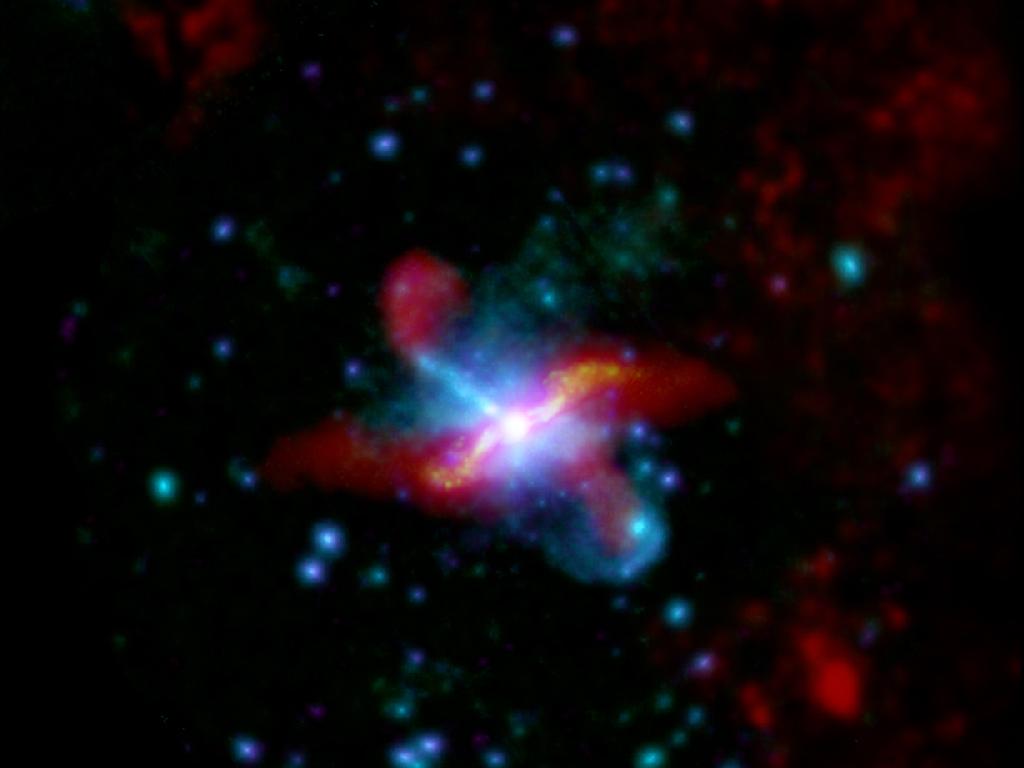
 Credit: Far-infrared: ESA/Herschel/PACS/SPIRE/C.D. Wilson, MacMaster University, Canada; X-ray: ESA/XMM-Newton/EPIC
Credit: Far-infrared: ESA/Herschel/PACS/SPIRE/C.D. Wilson, MacMaster University, Canada; X-ray: ESA/XMM-Newton/EPIC
What Cen A Ate
Centaurus A is one of the most identifiable galaxies. It's a nearby giant elliptical, and unlike other elliptical galaxies, it has a striking, dark dust lane across its middle. This peculiar dark dust lane was first noticed by the astronomer Sir John Herschel, who in 1847 called attention to it as a "a broad obscure band" which cut the galaxy in two. Centaurus A is also the nearest active galaxy. It harbors a supermassive black hole which is actively consuming whatever cosmic debris it can snatch, and which fires out two huge particle beams into intergalactic space. The image above shows a new, composite image of Centaurus A in the infrared (in red) and in X-rays (blue-purple). The infrared image was obtained (fittingly enough) by the European Space Agency's Herschel Space Observatory, while the X-ray image was obtained by the XMM-Newton X-ray observatory. Long-wavelength light seen by Herschel is not readily absorbed by dust, and therefore allows astronomers to peer into the central part of the galaxy behind the dust lane. The short-wavelength X-ray images obtained by XMM-Newton show the high-energy emission associated with the feeding central black hole and its energetic jets. Herschel's observations, and observations by the Spitzer Space Telescope, reveal the flat disk of a spiral galaxy at the heart of Centaurus A. This lends strong support to the idea that Centaurus A is the remnant of a cosmic collision in which a small galaxy was swallowed up by a much larger one.
Published: April 16, 2012
<
HEA Dictionary ● Archive
● Search HEAPOW
● Other Languages
● HEAPOW on Facebook
● Download all Images
● Education ● HEAD
>

Each week the HEASARC
brings you new, exciting and beautiful images from X-ray and Gamma ray
astronomy. Check back each week and be sure to check out the HEAPOW archive!
Page Author: Dr. Michael F. Corcoran
Last modified Monday, 26-Feb-2024 17:10:10 EST


